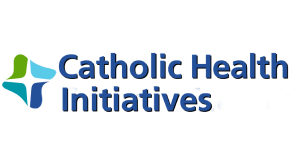Case Study: Advancing the Triple Aim in Post-Discharge Care
Provider:
Catholic Health Initiatives
Catholic Health Initiatives is one of the largest nonprofit health systems in the nation operating in 17 states across 100 hospitals. Its mission is to connect agencies, communities, and facilities with the goal of bringing everyone the care they need, wherever they need it.

Challenge:
Advancing the Triple Aim in Post-Discharge Care
Like most new programs they were faced with securing funding, finding their first client, and formalizing their processes. Christine Cunningham, BSRC RRT, is the Director of Clinical Services for CHI Health at Home. She and her team worked intensely on a detailed budget and business plan. Armed with a solid understanding of their funding needs, they carefully chose their initial prospects.
They focused on a community with five large hospitals and a close-knit home health market. They presented to all five hospitals and soon had their first client. Working closely with the hospital, they agreed upon inclusion and exclusion criteria for enrolling patients.
Cunningham sees delivering personalized, patient-centered care post-discharge as actually a three-fold pursuit. She explained that the “Triple Aim” consists of improved health outcomes, better care experiences for patients, and reduced cost of care. The Triple Aim is an exceptional challenge in any care setting and is further exacerbated in post-discharge care.
Solution:
HealthCall Care Coordination Platform with Patient Monitoring
To accomplish these goals, Cunningham turned once again to HealthCall. “Having used the HealthCall platform extensively in the past, we knew this solution would help us reach the Triple Aim,” Cunningham explained.
Although the Triple Aim objective could cause tension between the goals, Cunningham held an uncompromising mandate to ensure that patient care remained at the center of their focus. In order to keep costs in line while achieving the expected outcomes, the use of innovative technology such as automated assessments was used. The patient experience was enhanced as patients responded to the assessments at their convenience which was closely monitored by the team. Patients viewed these as an extension of care between their visits.
Starting with a HealthCall COPD Care Plan, Cunningham worked with HealthCall to design a program unique to them utilizing best practices. Managing patients with complex Chronic Obstructive Pulmonary Disease (COPD) is demanding and there are profound differences between in-hospital care and in-home care. Cunningham shared, “Our team and the technology had to be flexible enough to provide for best practices and hospital guidelines while balancing individual patient needs and multiple co-morbidities”.
The diligent work that Cunningham and team put into the initial design of the program delivered on the goals of Triple Aim however the easy ability to make changes to the program along the way was a crucial benefit HealthCall was able to provide. During the launch of this program, Cunningham and her team saw opportunities for improvement both clinically and operationally which led to better financial efficiency and patient experience. Cunningham was committed to constant improvement and HealthCall made that easy for her to accomplish. “HealthCall is great to work with,” Cunningham exclaimed.
Results:
Achieving the Triple Aim
Better outcomes were demonstrated in reduced readmission rates and a significant reduction in Length of Stay (LOS).
- Readmissions were reduced by 57% and 45% during the first 30 and 90 days respectively for all causes over twelve months (year-over-year).
- Length of stay and overall admissions were decreased materially by 35% and 43% respectively. This represents a remarkable reduction of 4.9 LOS days on average per patient!
The better experience was conveyed inpatient testimonies and consistent patient satisfaction scores of ten out of ten. While adherence to therapy is typically around 60%, within this program adherence to therapy was nearly 100%. Along with a system of education and coaching, Christine found that regular assessment of patient adherence led to increased patient adherence.
Better savings and cost avoidance for the hospital were achieved in reduced LOS and reduction in all-cause readmissions. Payers benefited from reduced consumption of critical care and hospital resources. For example, 78% of at-risk events were proactively treated mitigating further exacerbation of symptoms. Only 6% required an emergency department visit and 16% required admission to the hospital.
And this all started with the aim of bringing everyone the care they need.
Sources
Header cover photo credit: “Anchor, transfer, aim” by PeterThoeny is licensed under CC BY 20
